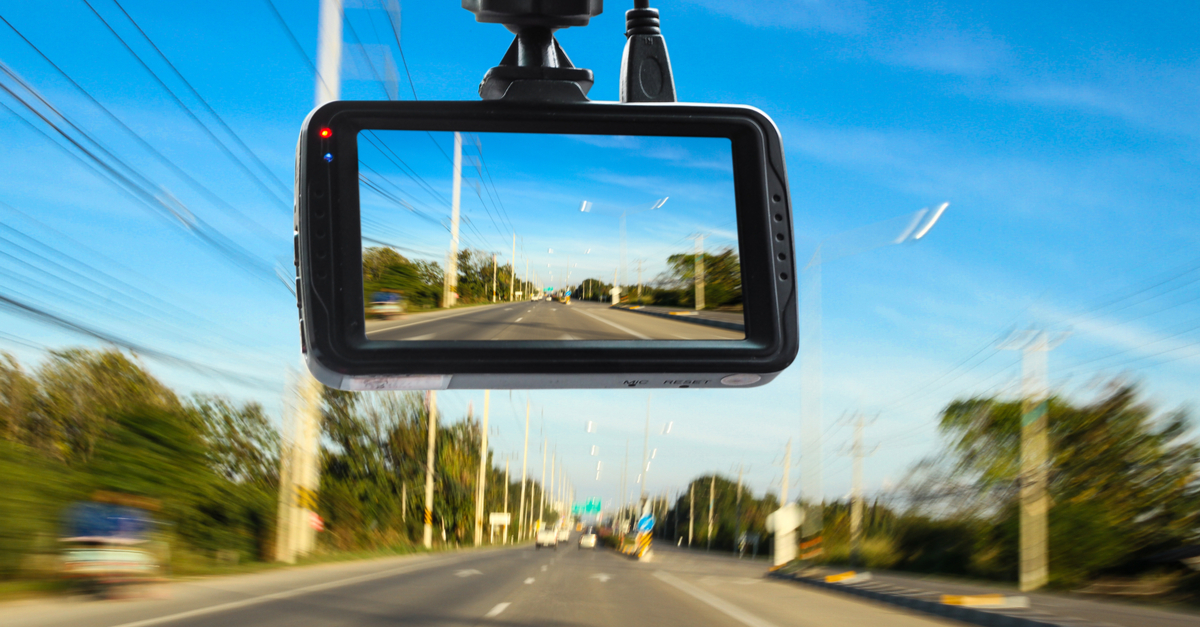by: Karen Bradley

According to Transport Topics, “Onboard cameras have become much more common in trucks, almost an expectation.”
If you’re considering installing a fleet dashcam for commercial vehicles, it’s time to start thinking about how you’ll introduce the technology to your drivers. If you install cameras without consulting with your drivers first, they may wonder: Are truck driver-facing cameras a necessity?
Even if your drivers understand the importance of keeping GPS tracking devices on company vehicles, they may not be aware of why in-cab cameras are important. At first, some drivers may feel uncomfortable with the fact that they’re being recorded. You’ll need to help your drivers understand the benefits of in-cab cameras, as well as your company’s policy on how to use them.
Here are the steps you can take to introduce this essential technology to your drivers.
You must get full driver buy-in and compliance with your camera policy before you start installing the devices. The best way to start is to introduce the concept of in-cab cameras before you make any major changes.
Be transparent about why you are introducing the technology in the first place. Your drivers need to know that you aren’t installing driver-facing cameras as a form of punishment or because you don’t trust them to perform their best.
Instead, explain how driver-facing, AI-powered cameras can reduce liability, lower insurance costs, and help your drivers stay focused while on the road. They are an integral part of a robust vehicle tracking system.
You should also explain how the technology works so there are no misconceptions. Cameras work alongside your other fleet tracking solutions to create indisputable evidence of what happens on the road. They record continuously but will only send out an alert when an incident occurs, such as an accident or a hard-braking event.
Explain how and why the footage is uploaded to the cloud. In some systems, the footage is only auto-uploaded when a safety-related event is detected. Let your drivers know who will be accessing this footage, what they’ll be looking for, and what steps will occur after footage is reviewed—if any steps are necessary.
Provide your drivers with an open forum to ask questions and voice their concerns. They should feel comfortable voicing their thoughts about this technology, and they’ll expect straightforward answers from you about why it’s a necessary investment.
Emphasize the fact that in-cab cameras are a part of your company’s safety goals and policies. If possible, allow senior leadership to take the lead in answering drivers’ questions and concerns. According to Harvard Business Review, 70% of employees feel engaged when senior leadership communicates their strategy, and 70% of employees feel engaged when they understand how their job contributes to that strategy.
Allow your drivers to see the technology in action. Install a camera in a vehicle and give it a test run, showing your drivers how it records, what a recording looks like, and how data is sent from the vehicle to the cloud.
This will allow them to ask more specific questions about the technology, and it will help to dismiss any misunderstandings about how it works.
One of the best ways to introduce in-cab cameras to your drivers is to show them how they benefit them directly.
First, in-cab cameras can reduce fatal injury crashes by a significant amount. According to a study by the Virginia Tech Transportation Institute, driver cameras—combined with other fleet management solutions—led to estimated reductions in fatal injury crashes of 20% to 35%.
Installing a camera not only improves vehicle and driver safety, but it can also document an accurate series of events in an accident. Drivers often must deal with aggressive behaviors from other drivers on the road. In-cab cameras can help your drivers prove that they weren’t at fault when another driver causes an incident.
You can even use cameras to reward drivers for positive behaviors. You could use them to create a points system, awarding drivers for safety practices while on the road, and encouraging friendly competition among your employees to improve their driving.
Finally, ensure drivers understand that cameras can reduce liability for the company. By combining AI-powered cameras with a car tracker, each vehicle becomes safer to operate, lowering insurance premiums and preventing the likelihood of a costly accident.
Last, explain to your drivers that the cameras can be used as a coaching tool. By documenting driver behavior, you can accurately track their driving on a scorecard and use their score as an objective teaching tool during performance reviews.
If your drivers need coaching, you won’t have to rely on abstract discussions to demonstrate where improvements need to be made. Instead, load the recorded video footage and go over incidents with your driver moment by moment. In this way, you can eliminate any speculation or misunderstanding from the coaching process.
In-cab cameras are becoming standard in fleet management but introducing them to your drivers in a practical way can help them better acclimate to driving with them. Highlight the many benefits of these cameras, and ensure your drivers are knowledgeable of your company’s expectations regarding their use. With In-cab cameras, you can leverage AI technology to keep your drivers and your vehicles safe on the road.
To learn more about in-cab smart cameras and other fleet tracking services, contact EcoTrack Fleet Management today to request a demonstration.